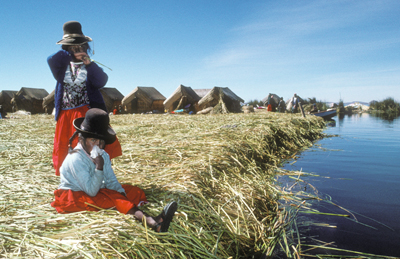 A problem eventually faced by every travel photographer is that it is impossible to photograph everything in a worthwhile manner. The world is simply too large, varied and colourful. Of course it is possible to take snaps of almost everything but the pictures are unlikely to tell a coherent story or have much aesthetic value. Better images result from involvement, understanding, focus and of course a seeing eye.
A problem eventually faced by every travel photographer is that it is impossible to photograph everything in a worthwhile manner. The world is simply too large, varied and colourful. Of course it is possible to take snaps of almost everything but the pictures are unlikely to tell a coherent story or have much aesthetic value. Better images result from involvement, understanding, focus and of course a seeing eye.
One of the reasons that experienced or professional travel photographers acquire better images than other travellers is that they have specific objectives and better focus. Their assignments call for images of a particular type and effort is expended only in that direction. They prepare well and approach their subjects with knowledge, but may still have to contend with a broad photographic scope. In order to record a tribal culture, for example, it might be necessary to utilize a wide variety of photographic techniques.
Experienced photographers also immerse themselves in a culture or situation rather than trying to record it as a mere observer. Somehow you have to get involved. It may seem a daunting task in a foreign land where you probably don’t speak the native language, but people are basically the same all over the world. Tell them who you are and what you would like to do, and ask for their co-operation. It is amazing how enthusiastic the support of strangers can become once trust has been established and your motives are understood; and, yes, all this can be achieved without language. Learn to communicate in non-verbal ways. Use gestures, humility and a sense of humour, and to relate to others through simple common interests such as homes, families, jobs, children and pet animals.
Photographers interpret subjects in the light of their own culture and experience, and cannot avoid doing so. The camera records a penetrating objective view of whatever appears in viewfinder, but the human eye is subjective and sees what interests it. We may photograph a beautiful face without noticing unkempt hair or dirty fingernails, but the lens sees it all with equal clarity. The eye zooms in automatically on interesting subjects but a camera is much less sophisticated. This means that attitudes, prejudices and beliefs of photographers are built in subtle ways into the process of image creation and, in work of any depth, the people may be inseparable from their work.
Despite the numerous significant advantages of capturing atmosphere, passion and a sense of place, don’t let others convince that straightforward “classic” views are not worth considering. Of course they are. Most of us are familiar with the standard shots of Niagara Falls or the Taj Mahal, but it is worth asking why this is so? It is surely because those views work and sell well. Many of them are the work of good photographers who at the time considered the compositions the best available. It is always worth looking for a fresh viewpoint or camera angle, but it may be difficult to beat the classic shot. All you have to do is get it right, and that may not be as easy as it looks.
Whilst pursuing broad objectives, the best start might possibly be made by looking for symbols of a culture – the characteristics that make a place what it is. These might be captured as part of the overall scene and atmosphere but are more commonly identified close-up amid the daily tasks and religious worship of the local people, in their architecture and food, or perhaps just by isolating simple situations, shapes or colours. One approach to this seemingly impossible task is to list key words such as religion, dance, passion, art, agriculture, food, together with characteristic human activities or moments, and then search out related symbols. Don’t be afraid to get involved. Get into dynamic situations where unexpected events may occur, but try to keep subjects and compositions simple. Be discreet and try not to change what was happening before your arrival, but get in close to fill the frame with interest and so increase impact.






